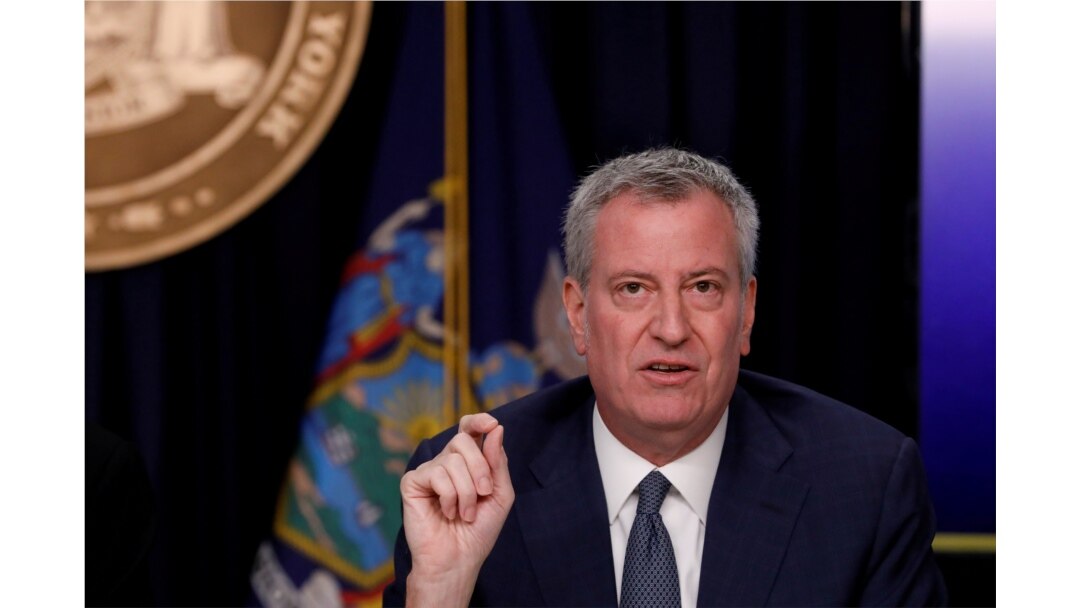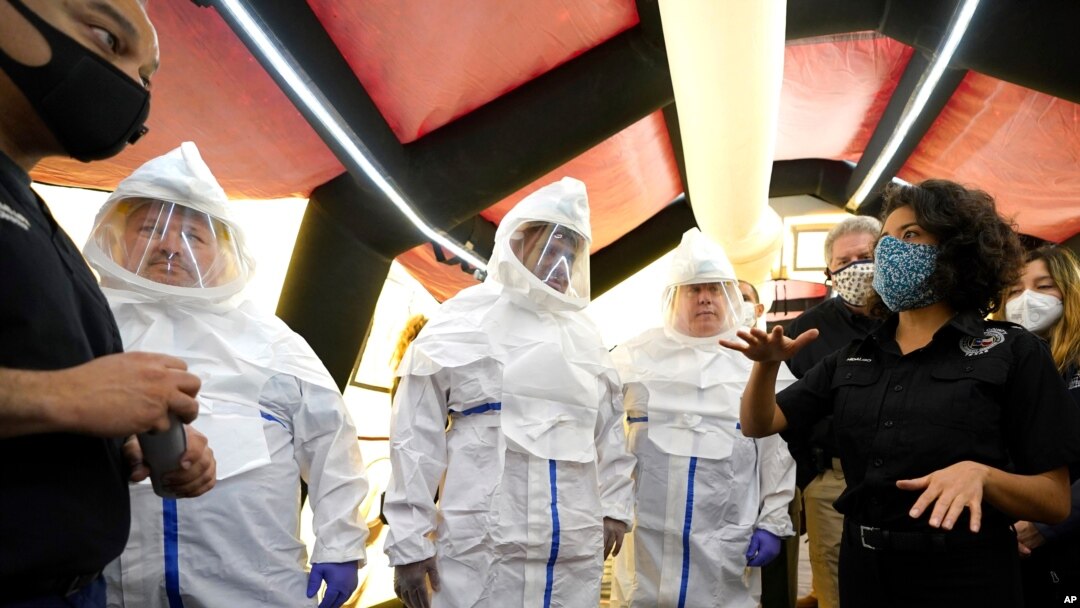The United States became the world leader in coronavirus deaths Saturday, a grim indicator of the country’s status as the global epicenter of the pandemic.
As of Saturday afternoon, the U.S. had recorded about 519,400 COVID-19 cases and 20,071 deaths, according to Johns Hopkins University statistics.
The figures showed the U.S. leading all other countries in the number of confirmed cases and fatalities, surpassing Italy’s death toll for the first time. Italy's total was 19,468 on Saturday, Hopkins' statistics showed.
The U.S. also became the world’s first country to report more than 2,000 COVID-19 deaths in a single day. The U.S. reported 2,108 fatalities Friday, the world’s highest one-day death toll since the outbreak began in China in late December.
New York is the hardest-hit state in the U.S., with Governor Andrew Cuomo reporting Saturday that there were 783 deaths on Friday, raising the state’s death toll to more than 8,600.

FILE - New York City Mayor Bill de Blasio is seen at a news briefing in the Manhattan borough of New York City, March 2, 2020.
To help stem the spread of the virus, New York City Mayor Bill de Blasio announced the city’s public schools would remain closed through the end of the school year for the 1.1 million children in the city’s system.
De Blasio said the decision was “painful” but “I can also tell you [it] is the right thing to do. It will clearly help us save lives.”
The World Health Organization said Saturday that it was examining reports of recovered COVID-19 patients testing positive again in South Korea as they were about to be discharged from hospitals.
Jeong Eun-kyeong, director of South Korea’s Centers for Disease Control and Prevention, told reporters the virus might have been “reactivated” in 91 patients instead of their being reinfected.
The WHO said in a statement, “We are aware of these reports of individuals who have tested negative for COVID-19 using PCR [polymerase chain reaction] testing and then after some days testing positive again.”
The organization said it was “closely liaising with our clinical experts and working hard to get more information on those individual cases.”
South Korean health officials said epidemiological investigations were underway to determine the causes of the apparent reactivations.
As the WHO and countries throughout the world grapple with containing the pandemic, the coronavirus continues its spread as billions of people on lockdown celebrate Easter weekend from their homes.
There were more than 1.76 million cases and more than 108,000 deaths worldwide -- in 193 countries -- as of Saturday afternoon, according to Hopkins' statistics.
U.S. President Donald Trump said Friday that deciding when to reopen the country would be “the biggest decision I’ve ever had to make” and that he would weigh the pros and cons of the decision with his health and economic advisers.
What was not clear, however, was whether all the states would follow what Trump said. Trump did not officially close down the country, leaving each governor, instead, to decide for his or her state.
FILE - President Donald Trump speaks during a coronavirus task force briefing at the White House, April 10, 2020, in Washington.
Trump has said he would like the country opened up again on May 1, despite a warning from the WHO on Friday that lifting lockdown measures too quickly could trigger a “deadly resurgence” of the coronavirus.
Trump acknowledged Friday the possibility of higher death tolls if businesses reopened too soon, saying, “But you know what? Staying at home leads to death also.”
Dr. Anthony Fauci, the nation’s top infectious diseases expert, told CNN that “the virus kind of decides whether it’s appropriate to open or not.” He cautioned that moving too early could result in another surge of infections.
The nationwide lockdown in Argentina that was set to end on Sunday has been extended to April 26. President Alberto Fernandez made the announcement Saturday, when he also said travel restrictions would be eased in some areas in the coming days.
As the virus spreads and death tolls climb, many public health experts throughout the world believe fatalities are actually much higher than have been reported, because postmortem testing has been limited. Some COVID-19 deaths were not attributed to the disease, they think, and other deaths go unreported because of homelessness and other factors.
China continued to report low numbers of new cases of the virus Friday, saying Hubei province, where the virus originated, logged zero new cases, while the rest of China recorded 46 new cases.
A Chinese study suggested that coronavirus particles can travel up to 4 meters from infected patients. The WHO recommends that people stay at least 1 meter away from someone who is sneezing, while the U.S. Centers for Disease Control and Prevention recommends a distance of about 2 meters.
The study, published Friday in the CDC publication Emerging Infectious Diseases, was conducted February 10 to March 2 in two hospitals in Wuhan, China.
A study conducted in the U.S. by the Massachusetts Institute of Technology found that sneezes and coughs could spread the virus more than 8.2 meters.


